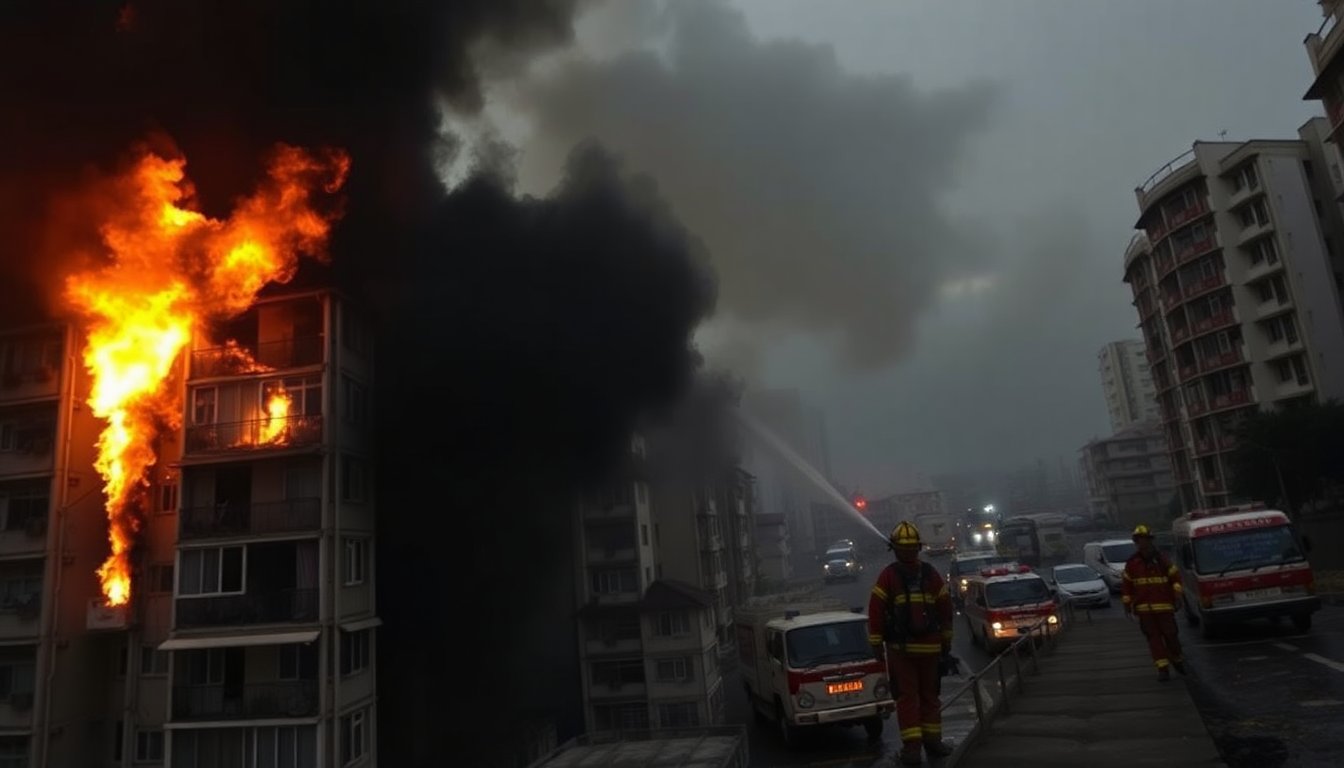Table of Contents
A large fire erupted in the Tai Po district of Hong Kong, resulting in the deaths of at least 44 individuals, with many more unaccounted for. This incident marks the most catastrophic fire in the city in over six decades and has raised significant concerns regarding safety practices in high-rise buildings.
As firefighters continue to combat the blaze, attention has turned to the events leading up to this disaster. The fire ignited at approximately 2:51 PM local time on Wednesday, starting on the bamboo scaffolding surrounding the Wang Fuk Court housing complex, which was undergoing renovations. The rapid spread of the flames was fueled by construction materials that ignited quickly.
Fire outbreak and rapid escalation
The fire began on external scaffolding made from bamboo, a commonly used material in Hong Kong’s construction industry. Due to ongoing renovation work, the buildings were also covered in protective netting, which caught fire as well. By 3:34 PM, the situation had escalated to a level four alarm, and shortly thereafter, the alarm was raised to the highest level five, indicating a critical emergency.
Building characteristics and fire spread
The residential complex, built in 1983, comprises eight high-rise towers with nearly 2,000 residential units. The combustibility of both the bamboo scaffolding and the green netting allowed flames to spread rapidly throughout the buildings. Firefighters encountered significant challenges due to falling debris and extreme heat, complicating their efforts to reach trapped residents on the upper floors.
As of early Thursday morning, four buildings were reported to be under control while firefighters continued to engage with the remaining structures. The extreme conditions have resulted in high temperatures within the buildings, further complicating rescue operations.
Investigation and accountability
In response to the tragedy, authorities have initiated an investigation to determine the cause of the fire. Officials have arrested three individuals—two company directors and an engineering consultant—on suspicion of manslaughter, suggesting gross negligence in maintaining safety standards during the renovation.
Construction safety concerns
The use of bamboo scaffolding, although traditional and prevalent in Hong Kong, has raised numerous safety concerns in recent years. An internal memo highlighted serious issues regarding bamboo’s high combustibility and structural weaknesses. While it remains a popular choice due to its lightweight nature and cost-effectiveness, the associated risks are under increasing scrutiny.
In light of this tragedy, the government is expected to review existing regulations regarding construction materials. Prior discussions had already suggested a shift towards using more metal scaffolding in future projects to mitigate risks.
Community impact and response
The aftermath of this fire has left the community in shock, with many residents displaced and seeking shelter in community centers. The Hong Kong government has pledged to provide resources and assistance to those affected, including offers of temporary housing for individuals who have lost their homes.
As the city grapples with this loss, the incident serves as a stark reminder of the potential dangers posed by outdated construction practices. The tragic loss of life has sparked a city-wide discussion on the urgent need for reform in construction safety regulations.
As firefighters continue to combat the blaze, attention has turned to the events leading up to this disaster. The fire ignited at approximately 2:51 PM local time on Wednesday, starting on the bamboo scaffolding surrounding the Wang Fuk Court housing complex, which was undergoing renovations. The rapid spread of the flames was fueled by construction materials that ignited quickly.0


